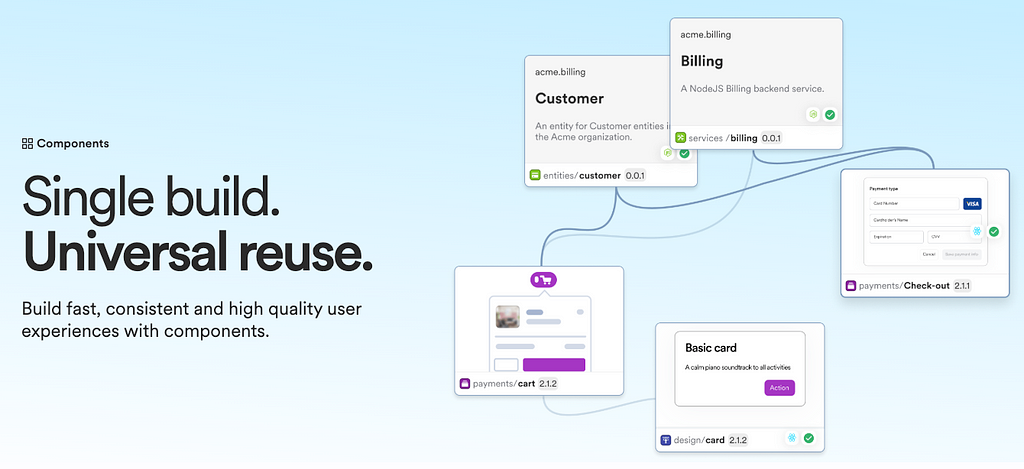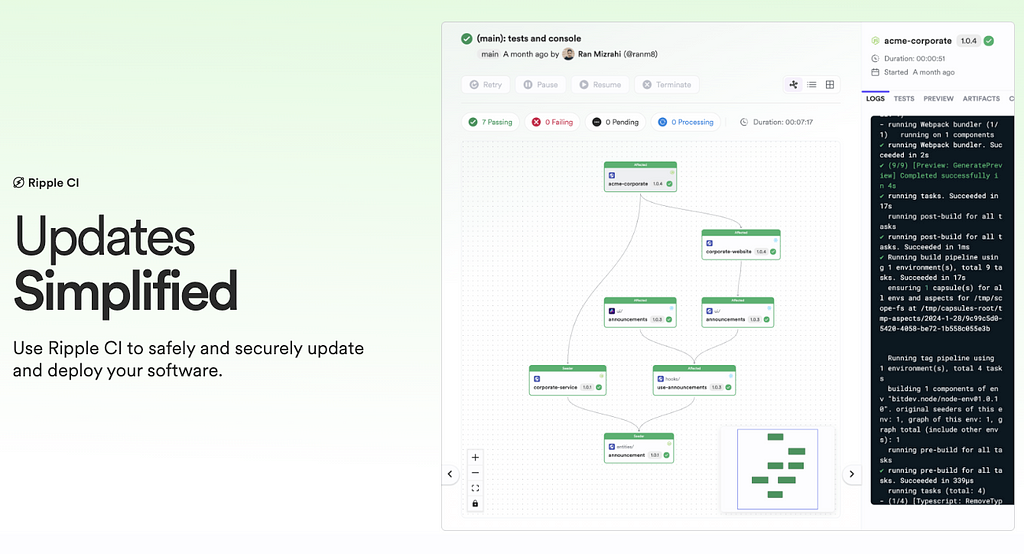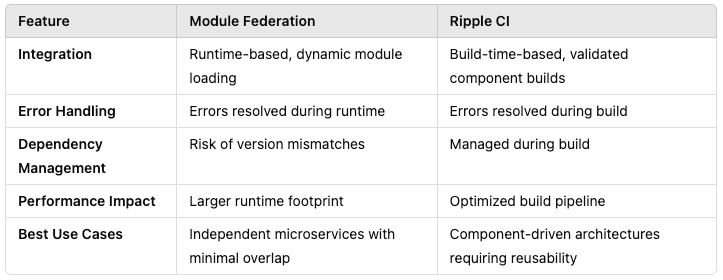This content originally appeared on Bits and Pieces - Medium and was authored by Ashan Fernando
Bridging Runtime Flexibility with Build-Time Stability

Micro frontends have emerged as a game-changer, addressing the challenges of building scalable web applications. It achieves this by breaking monolithic frontends into small, independent pieces where teams can work autonomously and deliver features faster. Integrating these pieces brings unique challenges when creating the final application.
But, How can you balance the need for runtime flexibility with build-time stability in modern web development?
Module Federation addresses the challenge of runtime integration for microfrontends. At the same time, Ripple CI makes it seamless to build and test each microfrontend independently for build-time integrations.
This article explores how these tools address the challenges of integrating microfrontends and why combining them can revolutionize your development workflow.
Module Federation in Micro Frontends
What is Module Federation?
Module Federation, introduced in Webpack 5, revolutionizes how JavaScript applications share and consume code. It allows independent builds to share code dynamically at runtime, enabling seamless integration without requiring tight coupling during development.
With Module Federation, developers can integrate independently deployed microfrontends or features, making it a cornerstone of scalable and adaptable architectures.
Key Features of Module Federation:
- Decentralized Builds: Applications can be developed and deployed independently while sharing common modules, such as libraries or utilities.
- Runtime Dependency Resolution: Dependencies are resolved dynamically at runtime, reducing the need for version alignment during builds.
- Flexibility: Teams can deploy updates independently, allowing faster iterations and reduced bottlenecks.
Example Use Case: Imagine an e-commerce platform where different teams develop the cart, product listing, and user profile. With Module Federation, these features can be built, deployed, and updated independently while ensuring seamless runtime integration.
Challenges with Module Federation
Despite its advantages, Module Federation presents challenges that developers must navigate:
- Runtime Complexity: Dependencies are resolved during runtime, which can lead to mismatches and unexpected failures if APIs or versions are incompatible. Debugging runtime issues often requires significant effort.
- Performance Overheads: Dynamically loading modules can introduce latency, especially when multiple versions of the same dependency are included in the application.
- Maintenance Challenges: Managing breaking changes becomes more complicated with runtime resolution. Testing across all possible runtime scenarios demands significant resources and effort.
While Module Federation delivers unparalleled flexibility, these challenges highlight the importance of complementing runtime integration with robust build-time validation.
Composable Module Federation: The Role of Reusable Components
Composable Module Federation combines the runtime flexibility of Module Federation with the structured, reusable nature of component-driven design. By embracing components as the building blocks of a microfrontend architecture, teams can achieve unparalleled scalability, collaboration, and consistency across their applications.

The Power of Reusable Components
At the heart of composable architectures are reusable components. These encapsulated units of functionality — whether UI elements, utilities, or shared contexts — streamline development and drive consistency. Design systems, for instance, are a prime example of how reuse can unify the user experience across multiple microfrontends.
Why Reusable Components Matter:
- Consistency: Shared components such as buttons, headers, or navigation bars ensure a uniform look and feel across applications.
- Efficiency: By reusing prebuilt, tested components, teams save time and reduce the likelihood of introducing bugs.
- Scalability: Components are modular and versioned, enabling seamless updates and iterative improvements.
How Components Enhance Module Federation
- Runtime Integration with Module Federation: Components enable independent deployments and dynamic updates without disrupting the larger application.
- Code Sharing and Reusability: Components ensure that code, such as UI elements or utilities, is reusable and consistent across microfrontend teams, reducing duplication.
- Centralized Dependency Management: Shared libraries and frameworks are centrally managed and distributed, ensuring alignment and preventing version conflicts.
Module Federation integrates microfrontends at runtime, while components drive reuse and collaboration by sharing code and dependencies across teams.
This synergy ensures that microfrontends remain cohesive, even as teams work independently, offering the best of both worlds.
For an introduction to composable architectures in microfrontends, see;
Composable Software Architectures are Trending: Here’s Why
Ripple CI: Ensuring Build-Time Stability in Component-Driven Micro Frontends

What is Ripple CI?
Ripple CI is a component-driven CI/CD tool that shifts the focus from runtime dependency resolution to robust build-time validation. By prioritizing components as the fundamental unit, Ripple CI streamlines the development, testing, and deployment of modular microfrontends.
Key Features of Ripple CI:
- Selective Builds: Only components affected by changes are rebuilt, reducing build times and resource consumption.
- Dependency Validation: Ripple CI proactively tests and validates dependencies between components, identifying incompatibilities before deployment.
- Component Lifecycle Management: The tool automates building and testing components out of the box.

By integrating Ripple CI into a microfrontend workflow, teams can ensure their components are rigorously tested and validated before integration.
This build-time stability complements the dynamic nature of Module Federation, allowing developers to maintain flexibility without sacrificing predictability.
Leverage Ripple CI with Module Federation to combine the best of runtime flexibility and build-time stability.
Conclusion

Module Federation and Ripple CI address distinct challenges in modern microfrontend architectures, making them complementary tools for developers.
While Module Federation delivers runtime flexibility for seamless integration and independent deployments, Ripple CI ensures build-time stability by validating dependencies and testing components rigorously.
Explore how these tools can transform your workflow and improve the efficiency of developing microfrontends. Cheers!
Learn More
- Micro Frontends: A Practical Step-by-Step Guide
- Micro Frontends with Vite and Bit
- Increasing Agility in Microfrontend Design: A Developer’s Guide
- Monorepos: Why it’s Difficult to Break Free
Micro Frontends: Module Federation vs. Ripple CI was originally published in Bits and Pieces on Medium, where people are continuing the conversation by highlighting and responding to this story.
This content originally appeared on Bits and Pieces - Medium and was authored by Ashan Fernando
Ashan Fernando | Sciencx (2024-12-25T15:42:17+00:00) Micro Frontends: Module Federation vs. Ripple CI. Retrieved from https://www.scien.cx/2024/12/25/micro-frontends-module-federation-vs-ripple-ci/
Please log in to upload a file.
There are no updates yet.
Click the Upload button above to add an update.
